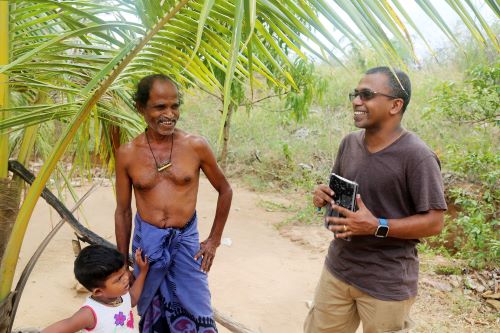New research has revealed the trauma faced by journalists during the height of the pandemic, caused by exposure to online threats, disturbing information and disrupted work routines that exacerbated an industry already under pressure from the rise of social media and online news.
Journalism and media experts from the University of South Australia have explored the impact of online trauma and threats faced by media professionals during lockdown and restriction periods of the pandemic.
Findings suggest that while journalists were able to work from home, their reliance on online and digital tools increased, exposing them to potential threats such as trolling, cyber stalking, graphic content, fake news and disturbing information, as well as disrupted work routines.
A survey of 60 people from around the world found that journalists' reliance on online resources significantly increased during COVID-19. Before the pandemic only 9% of surveyed journalists spent less than two hours per day online for work. By the time lockdowns occurred, that figure rose to 100%. Almost two-thirds of journalists said fake news and dangerous information was the most potent online danger following the height of the pandemic.
Lead researcher PhD student Amantha Perera has worked as a journalist for more than 20 years, his work appearing in TIME, Reuters, The Washington Post, The Guardian and al-Jazeera.
He says the pandemic left journalists in a constant state of uncertainty and feeling anxious and nervous for long periods of time. They also felt they lacked the effective resources and skills to create relief from that environment.
"The traditional journalism practices like tight deadlines, attention to detail and the competition to report stories before others made it more difficult for journalists to switch off. Those we surveyed described COVID-19 as an intense, fast-moving and dynamic story with constant emphasis that it was global and potentially fatal. The threat of infection was always present," Perera says.
"An overwhelming 97.6% of the survey participants agreed that more resources should be diverted to help journalists build skills to mitigate online trauma which can include disturbing information, graphic content, and abuse and threats."
One survey participant described the isolation of working and living in a hyper-active information environment and being connected 24/7.
"I was alone a lot in front of the computer. I could not move around in my city. I felt trapped, often interviewing people in very difficult situations. That made things more pronounced for me, and I couldn't escape it by doing things I usually enjoyed as I was stuck at home," they said.
The exponential rise in social media platforms such as Facebook, X, Instagram, TikTok and YouTube, as well as other online resources, have made it easier for audiences to engage immediately with the news cycle and journalists themselves.
"Social media, messaging groups and user comments on stories make it easy for readers to be anonymous and this has created a new digital challenge for journalists who work online," Perera says.
"The more time that journalists spend inside social media communities, means the more exposure to online toxicity. This is combined with journalists being required to produce often lifesaving public safety information while working long hours and often in remote workspaces during the height of COVID-19.
"This challenging reporting environment resulted in feelings of fatigue, frustration and anxiety - all of which can manifest in journalists reporting under other potentially traumatic situations like natural disasters."

Perera has proposed the development of a 'digital flak jacket' for journalists - a suite of tools and training which adequately prepares journalists for work in digital spaces. His idea was influenced by time he spent reporting the war in Sri Lanka. Every time Perera entered an active conflict zone, he would put on a flak jacket, which is a form of body armour.
"I did this to make sure that I was prepared and relatively safe from potential hazardous reporting situations. In a similar vein, the digital flak jacket proposes a digital equivalent; a set of resources and interventions, which would allow journalists to report within digital or hybrid workspaces safely. For the digital flak jacket to be effective, the individual journalist needs to assess the current threat exposure levels and decide on the most suitable interventions," he says.
While COVID-19 restrictions have long eased, urgent humanitarian situations in Myanmar, Sri Lanka, Ukraine, Israel and Gaza leave journalists to face similar and potentially dangerous working situations while reliant on online resources.
"Our ongoing work investigating current work conditions faced by journalists in the Asia Pacific has shown that journalism is now functioning in a hybrid workspace where the online and the offline interchange seamlessly," he says.
"This has in turn increased the exposure levels to what we now define as technology facilitated threats. There is also heightened concerns over the impact of generative AI from job losses to fake content to eroding trust. The digital flak jacket is an essential work tool now."






